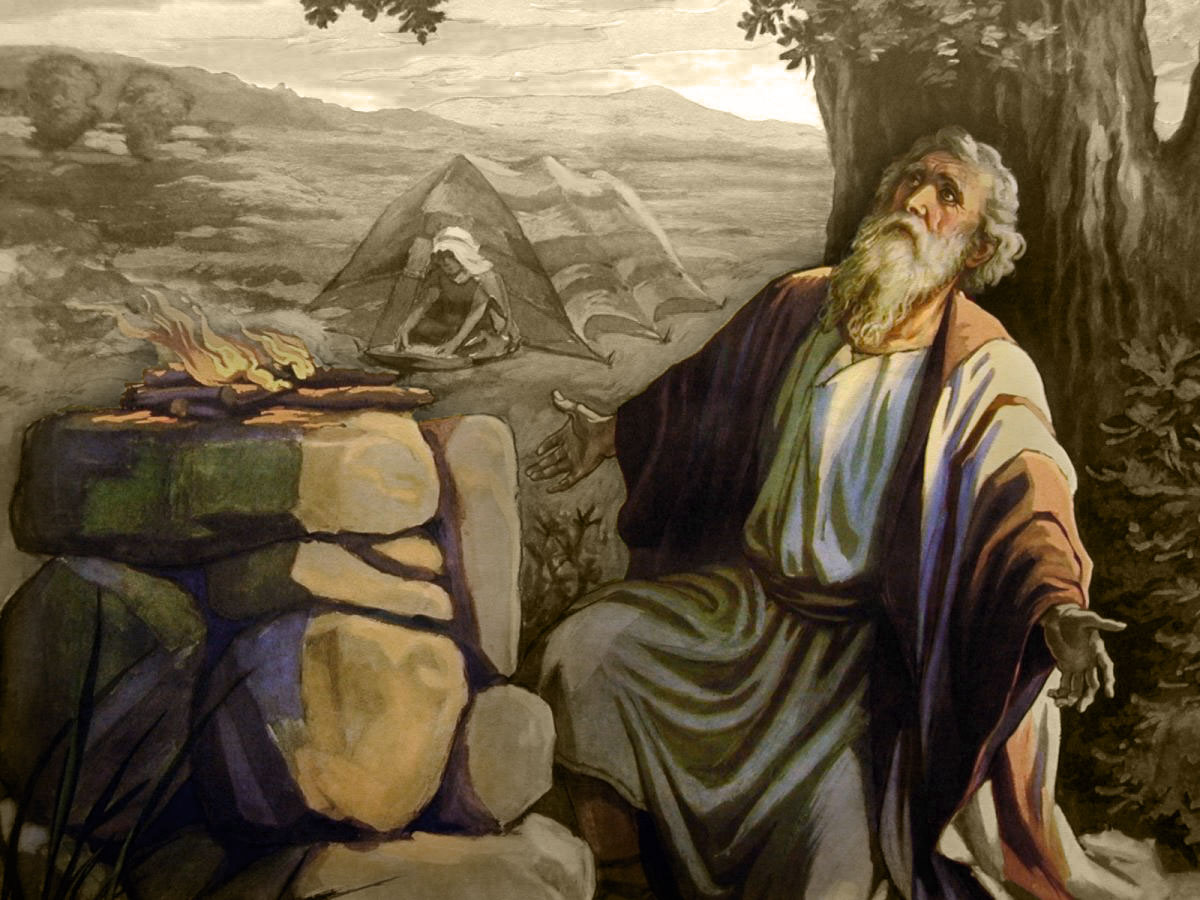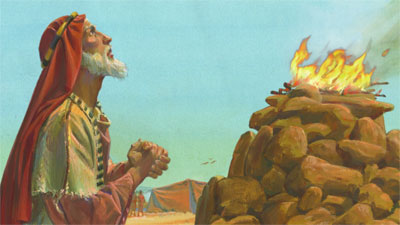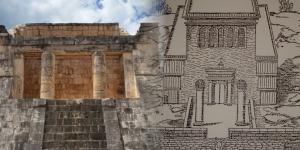You are here
How Could Lehi Offer Sacrifices Outside of Jerusalem?

1 Nephi 7:22
The Know
When Lehi and his family fled Jerusalem they “traveled three days in the wilderness” before Lehi “pitched his tent in a valley by the side of a river of water.” Thereupon Lehi “built an altar of stones, and made an offering unto the Lord, and gave thanks unto the Lord our God” (1 Nephi 2:6–7; cf. Exodus 20:25).1
Some time later, after Nephi and his brothers had returned from retrieving the brass plates from Laban, Lehi and his family gave "thanks unto the Lord their God; and they did offer sacrifice and burnt offerings unto him” for their safe return (1 Nephi 7:22).
Lehi offering sacrifices outside the confines of the Jerusalem temple seems to be in violation of a commandment given in Deuteronomy 12, which has been interpreted by some as stipulating that sacrifices are only to be offered at the temple in Jerusalem (cf. Deuteronomy 12: 5–6, 10–11, 13–14). If this is so, then the Book of Mormon would appear to contradict the biblical record, which might call into question the authenticity of Lehi and his family as being strict in keeping the Law of Moses.
Although this reading is understandable, BYU professor David Rolph Seely has challenged this approach by noting a number of points.2
First, according to Seely, it is possible that “Deuteronomy 12 did not intend to eliminate all sacrifice away from the main sanctuary.” In fact, “altars and sacrifice and even other temples continued at various places” outside of Jerusalem, which is unquestionably verified by archaeology.3
Second, “Melchizedek Priesthood holders were not bound by the centralization of worship as prescribed by Deuteronomy 12,” which would make sense in the case of Lehi, a non-Levite (1 Nephi 5:14). “The fact that the patriarchs of old, officiating with Melchizedek Priesthood authority, built altars and offered sacrifice in various locations,” argued Seely, “suggest that the centralized worship prescribed in Deuteronomy was either misunderstood or was part of the lower law—a temporary law—that was fulfilled with the atonement of Jesus Christ.”4
Third, and finally, “Deuteronomy 12 may have been interpreted anciently as applying only to the land of Israel.”5
As Seely noted, one of the texts of the Dead Sea Scrolls, the Temple Scroll (11QT),6 specifically noted that sacrifices were not to be offered outside of Jerusalem within a three days’ journey. As such “the building of an altar and the offering of sacrifice were allowed only outside the radius of a three days' journey from the temple in Jerusalem. To put the matter differently, sacrifices beyond the three-day limit were acceptable under the law of Moses.”7
Latter-day Saint scholar S. Kent Brown has also explored the nature of Lehi’s sacrifices and concluded that Lehi offered both “peace offerings” for the family’s safety and “burnt offerings” for the family’s sins. Concerning the “peace offering,” Brown explained that “in all of its forms this offering was an occasion for rejoicing, a happy state that Nephi highlights for us when recounting the mood of Lehi’s sacrifice after the sons returned with the brass plates: ‘Their joy was full’" (1 Nephi 5:7).
This last observation emphasizes the importance for Lehi of remembering to give thanks to the Lord even out of what must have been, at that point, very precious food in his meager provisions.8
With regard to the “burnt offerings,” Brown concluded,
Lehi was bringing to the altar sacrifices that would atone for sin, sin that would stain the camp and those within it. In each case, one can readily detect sin in the prior behavior of family members whether it took the form of complaining, family jousts, or the taking of human life. Here, Lehi sought to free his extended family from the taint of unworthiness so that he and they would be able to carry out the purposes of the Lord.9
It appears that the Book of Mormon actually responds well to the nuances of the ancient Israelite sacrificial ordinances, suggesting that, instead of contradicting the biblical record, the Nephite record actually harmonizes quite well with it.
The Why
Now it becomes clear why Lehi would offer sacrifices as he left the land of Jerusalem. From the research provided by Professor Seely, it would appear that Lehi understood the book of Deuteronomy to allow sacrifices, especially thanksgiving sacrifices, at various locations.
Moreover, the fact that Lehi was three days away from Jerusalem may have placed him, in any event, beyond the regulated sphere of the Temple in Jerusalem, as evidence from the Dead Sea Scrolls arguably confirms. Thus, Lehi set an important example for his family in living the law promptly and conscientiously.
By offering sacrifices, Lehi and his family were fulfilling not only the Law of Moses, but also a duty that comes from God’s law of gratitude (Psalm 100; D&C 46:32). In some cases, the law of giving thanks to God may override technical rules of sacrificial performances. That Nephi twice made special mention of his father’s sacrifices, even in spite of his perilous and uncertain circumstances, would indicate that both of them were acutely aware of the importance of showing thanks and gratitude to God for his blessings. All this shows that for Nephi and Lehi, the law of sacrifice was made for man, and not man for the law of sacrifice (cf. Mark 2:27).
For these many reasons, Lehi would not and did not fail to make sacrifices when he arrived safely at his first camp south of Jerusalem.
Further Reading
David Rolph Seely, “Lehi’s Altar and Sacrifice in the Wilderness,” Journal of Book of Mormon Studies 10/1 (2001): 62–69, 80.
S. Kent Brown, “What Were Those Sacrifices Offered by Lehi?” in From Jerusalem to Zarahemla: Literary and Historical Studies of the Book of Mormon (Provo, UT: Religious Studies Center, Brigham Young University, 1998), 1–8.
- 1. Hugh Nibley has pointed out that this action by Lehi is consistent with ancient Semitic practice. See Hugh Nibley, An Approach to the Book of Mormon, The Collected Works of Hugh Nibley: Volume 6 (Provo: Deseret Book and FARMS, 1988), 245–46;
- 2. David Rolph Seely, “Lehi’s Altar and Sacrifice in the Wilderness,” Journal of Book of Mormon Studies 10, no. 1 (2001): 62–69, 80.
- 3. Seely, “Lehi’s Altar and Sacrifice in the Wilderness,” 66; On temples and cult sites outside of Jerusalem, see generally Philip J. King and Lawrence E. Stager, Life in Biblical Israel (Louisville, Kentucky: Westminster John Knox Press, 2001), 330–340.
- 4. Seely, “Lehi’s Altar and Sacrifice in the Wilderness,” 67–68.
- 5. Seely, “Lehi’s Altar and Sacrifice in the Wilderness,” 68.
- 6. The relevant passage from 11QT (11Q19 52:13–15) specifically reads, “You shall not slaughter a clean ox or sheep or goat in all your towns, near to my temple (within) a distance of a three-days’ journey; nay, but inside my temple you shall slaughter it, making it a burnt offering or a peace offering.” Donald W. Parry and Emanuel Tov, The Dead Sea Scrolls Reader: Volume I (Leiden/Boston: Brill, 2013), 689—99.
- 7. Seely, “Lehi’s Altar and Sacrifice in the Wilderness,” 69.
- 8. S. Kent Brown, “What Were Those Sacrifices Offered by Lehi?” in From Jerusalem to Zarahemla: Literary and Historical Studies of the Book of Mormon (Provo, UT: Religious Studies Center, Brigham Young University, 1998), 2.
- 9. Brown, “What Were Those Sacrifices Offered by Lehi?” 6.
KnoWhy Citation
Related KnoWhys
Subscribe
Get the latest updates on Book of Mormon topics and research for free







